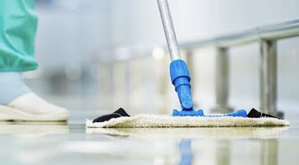New Delhi, 14 February (IANS). Despite thorough cleaning in hospitals, dangerous bacteria are hidden in sink pipes there. According to a research, this problem is playing a big role in increasing “Health Services Infection” (HAI).
HAIs spread more in patients whose immunity is weak. Apart from this, this problem becomes more serious even by not following the rules of cleaning in some hospitals properly. According to the study, such infections have become a major problem worldwide and about 6 percent of the total budget of hospitals is spent on it.
Excessive use of antibiotics also increases this problem, as some species of bacteria are registered with drugs. When these resistance genes move from one bacteria to another, the chances of getting new types of diseases increase.
Professor Margharita Gomila of Balleric Islands University in Spain said that the population of bacteria in hospital sink pipes varies over time, no matter how strict the cleaning rules are. The study was published in the magazine “Frontiers in Microbiology”. It highlights that it can be a global problem to control the growth of bacteria in the pipe and prevent new bacteria from the arrival of new bacteria at such places. These places are where the effect of disinfectant is low. “
Research showed that the sink and their pipes or drains are regularly cleaned with bleach, chemicals and steam. This cleanliness drive continues continuously at intervals of a few days. In addition, pipes are once a year at low temperatures. Despite this, scientists found a total of 67 types of bacteria in pipes.
Most of the bacteria were found in General Medical (General Medicine) and ICU, while the lowest microbiology was found in the lab. The newly opened ward of ICU also had more bacteria variety. It mainly found bacteria called Stanotrophomonas and Pseudomonas aeruginosa, which could spread diseases such as pneumonia and sepsis.
In addition, researchers also found 16 other types of bacteria of the Pseudomonas species, which the World Health Organization has considered one of the largest antibiotic hazards for humans. These bacteria were found more especially in the hospital’s short-station ward.
Other dangerous bacteria were also found repeatedly in various wards. Researchers warned that the pipes of the hospital’s sink could become an ideal place for hiding and growing of bacteria. These may also include some bacteria that have the ability to avoid antibiotics and can spread new infections. Therefore, it is important to know where these bacteria come from and how to reach the patients, so that their spread can be stopped.
-IANS
AS/






